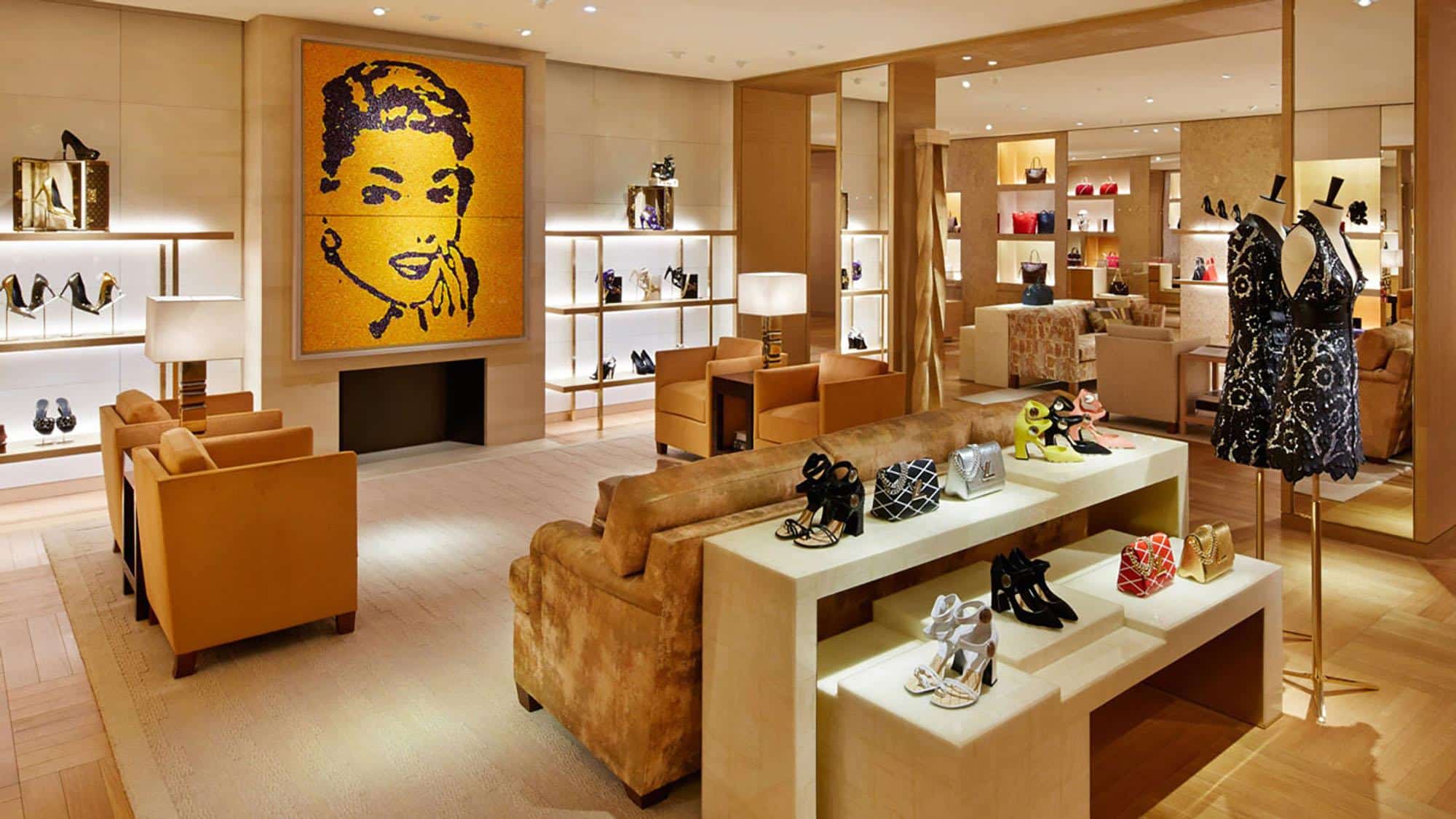[vc_row njt-role=”people-in-the-roles” njt-role-user-roles=”administrator,editor,author,armember”][vc_column][vc_column_text]
Can do better. The 2022 edition (the second after 2020) of the Circular Fashion Index (CFX) established by the American consultancy firm Kearney is not very flattering for luxury. It assesses the work of 150 global fashion brands in sustainability and rates them on seven criteria (including primary and secondary markets), which impact on the longevity of clothing (use of recycled materials, repair services, second hand; information on maintenance…).
Admittedly, the 17 luxury brands evaluated have the best scores on average, i.e. 3.52 (out of 10) compared to 3.29 for sports brands, 3.11 for premium brands and 2.89 for mass market brands. But this is not much better than the median score for all brands combined, which is 2.85 in 2022 (compared to 1.6 out of 10 two years ago).
And these scores are still insufficient, according to Kearney, who believes that the fashion industry “can – and must – do much more overall – and faster – in terms of circularity”.
Taken individually, the luxury houses do not shine in the firmament of this ranking either.
There are only two in the top ten, and not even in the leading group : Gucci (Kering group) in sixth place and Coach (Tapestry group) in eighth place. They are thus overtaken by more mass market brands such as Patagonia, Levi’s, The North Face, Esprit and Ovs, on the first five steps of the podium.
Far behind are Louis Vuitton (23rd), Saint Laurent (27th), Balenciaga (37th), Dior (39th), Hermès (44th) and Chanel (54th).
Strong improvements.
Certainly, several have greatly improved their scores since the first edition in 2020.
Gucci, for example, has made a strong comeback from a lowly 15th place in 2020. “The brand has stepped up its efforts with initiatives such as its environmental digital platform Gucci Equilibrium and its circular collections “Off the Grid”, launched in 2018 and 2020 respectively. It has also improved its promotion and communication around product sustainability and circularity. It had pioneered the use of Econyl regenerated nylon yarn back in 2016.”
With a 248% improvement in its score, Louis Vuitton also managed to move into the top quartile. It has increased the share of recycled materials used by its brands, launched the Cedre platform to recycle and sell its unsold materials, launched Virgil Abloh up-cycled sneakers and the LV upcycling logo. But Kearny says the biggest initiative has been the rise of care instructions for all products, available on its website.
Kearney also praises Coach‘s rise in the Top 10, in part due to its messages emphasising the longevity and repair of its products, which helped it stand out. More and more maintenance information is also provided on its website.
Lastly, taking everything together (luxury, premium, mass market, etc.), we can note the best performance of France, first in the CFX ranking, which obtained a score of 3.65 for its 22 brands, ahead of Italy and the United States (2.95 each) and Germany (2.63).
Read also > THE FASHION AND LUXURY INDUSTRY GIVES A GENERALLY POSITIVE ASSESSMENT OF THE FIRST MACRON QUINQUENNIUM
Featured photos : © Louis Vuitton[/vc_column_text][/vc_column][/vc_row][vc_row njt-role=”not-logged-in”][vc_column][vc_column_text]
Can do better. The 2022 edition (the second after 2020) of the Circular Fashion Index (CFX) established by the American consultancy firm Kearney is not very flattering for luxury. It assesses the work of 150 global fashion brands in sustainability and rates them on seven criteria (including primary and secondary markets), which impact on the longevity of clothing (use of recycled materials, repair services, second hand; information on maintenance…).
Admittedly, the 17 luxury brands evaluated have the best scores on average, i.e. 3.52 (out of 10) compared to 3.29 for sports brands, 3.11 for premium brands and 2.89 for mass market brands. But this is not much better than the median score for all brands combined, which is 2.85 in 2022 (compared to 1.6 out of 10 two years ago).
And these scores are still insufficient, according to Kearney, who believes that the fashion industry “can – and must – do much more overall – and faster – in terms of circularity”.
[…][/vc_column_text][vc_cta h2=”This article is reserved for subscribers.” h2_font_container=”tag:h2|font_size:16|text_align:left” h2_use_theme_fonts=”yes” h4=”Subscribe now !” h4_font_container=”tag:h2|font_size:32|text_align:left|line_height:bas” h4_use_theme_fonts=”yes” txt_align=”center” color=”black” add_button=”right” btn_title=”I SUBSCRIBE !” btn_color=”danger” btn_size=”lg” btn_align=”center” use_custom_fonts_h2=”true” use_custom_fonts_h4=”true” btn_button_block=”true” btn_custom_onclick=”true” btn_link=”url:https%3A%2F%2Ftest2023.luxus-plus.com%2Fen%2Fsubscriptions-and-newsletter-special-offer-valid-until-september-30-2020-2-2%2F”]Get unlimited access to all articles and live a new reading experience, preview contents, exclusive newsletters…
Already have an account ? Please log in.
[/vc_cta][vc_column_text]Featured photo : © Louis Vuitton[/vc_column_text][/vc_column][/vc_row][vc_row njt-role=”people-in-the-roles” njt-role-user-roles=”subscriber,customer”][vc_column][vc_column_text]
Can do better. The 2022 edition (the second after 2020) of the Circular Fashion Index (CFX) established by the American consultancy firm Kearney is not very flattering for luxury. It assesses the work of 150 global fashion brands in sustainability and rates them on seven criteria (including primary and secondary markets), which impact on the longevity of clothing (use of recycled materials, repair services, second hand; information on maintenance…).
Admittedly, the 17 luxury brands evaluated have the best scores on average, i.e. 3.52 (out of 10) compared to 3.29 for sports brands, 3.11 for premium brands and 2.89 for mass market brands. But this is not much better than the median score for all brands combined, which is 2.85 in 2022 (compared to 1.6 out of 10 two years ago).
And these scores are still insufficient, according to Kearney, who believes that the fashion industry “can – and must – do much more overall – and faster – in terms of circularity”.
[…][/vc_column_text][vc_cta h2=”This article is reserved for subscribers.” h2_font_container=”tag:h2|font_size:16|text_align:left” h2_use_theme_fonts=”yes” h4=”Subscribe now !” h4_font_container=”tag:h2|font_size:32|text_align:left|line_height:bas” h4_use_theme_fonts=”yes” txt_align=”center” color=”black” add_button=”right” btn_title=”I SUBSCRIBE !” btn_color=”danger” btn_size=”lg” btn_align=”center” use_custom_fonts_h2=”true” use_custom_fonts_h4=”true” btn_button_block=”true” btn_custom_onclick=”true” btn_link=”url:https%3A%2F%2Ftest2023.luxus-plus.com%2Fen%2Fsubscriptions-and-newsletter-special-offer-valid-until-september-30-2020-2-2%2F”]Get unlimited access to all articles and live a new reading experience, preview contents, exclusive newsletters…
Already have an account ? Please log in.
[/vc_cta][vc_column_text]Featured photo : © Louis Vuitton[/vc_column_text][/vc_column][/vc_row][vc_row njt-role=”people-in-the-roles” njt-role-user-roles=”subscriber,customer”][vc_column][vc_column_text]








